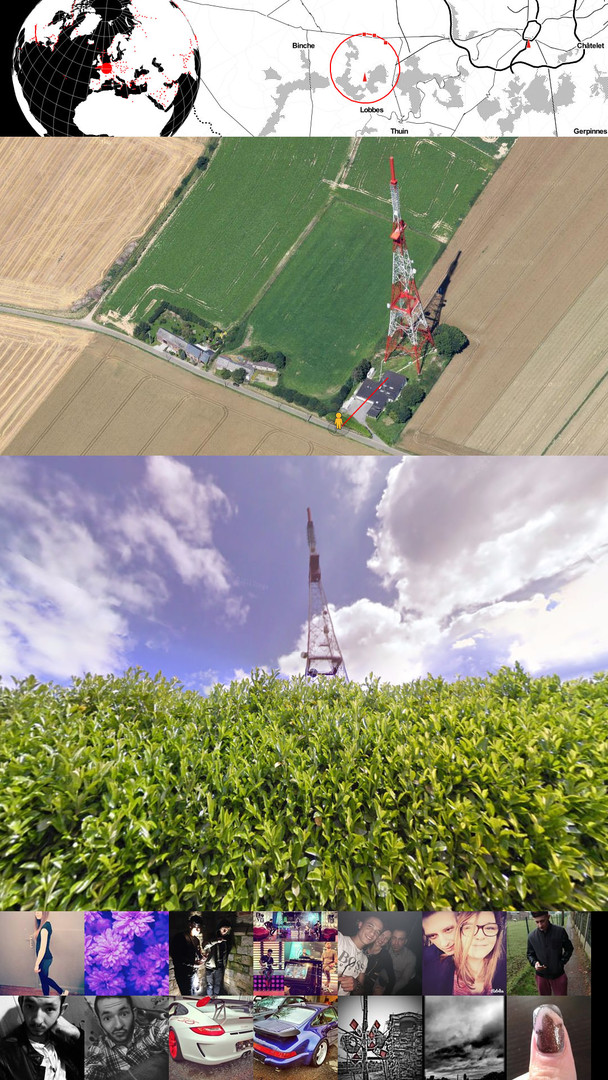

2016 - / prototype
Avec Donato Ricci et le support du , SciencesPo médialab. Ce projet à été présenté dans l'exposition Reset Modernity! au ZKM
Les données ont été collectés par Alexandre Laumonier (sniperinmahwah.wordpress.com)

A Network of Fragments is an instrument who aims to make visible local fragments of various networks used for High Frequency Trading. These fragments, high masts covered with “dishes”, are represented through a superposition of various sources. Maps, Google’s satellite image, Street Views, and Instagram pictures allow us to see the superposition of the High Frequency Trading network with the local and daily activities of the population living around these antennas. The coordinates of this network were gathered by the anthropologist Alexandre Laumonier.
"Techniques are simultaneously ubiquitous and invisible. This is especially true of data transfer. They are supposed to be immaterial and nonetheless require a massive but distributed infrastructure. Their networks punctuate the landscape of ordinary folks in a way that is hard to reconcile with the latter’s familiar views. We lose sight of them. Hence the importance of detecting through new visual designs how technical networks traverse our lives." — Bruno Latour

The installation aims to superpose antennas used for High Frequency Trading and their immediate environment. For each antenna,have been collected and re-composed, in the same visual space using mash-up technique, map, satellite image, panoramic view and Instagram pictures.
These antennas are local fragments of large networks studied by the anthropologist Alexandre Laumonier using multiple open-source intelligence like companies websites, governmental telecommunication institution or engineer linkedin profiles (see:http://sniperinmahwah.wordpress.com).
The stack of visual representations shows the idiosyncratic nesting of a mysterious trading technique over the mundane and daily activity installed over a place. Particularly interesting are the situations in which the technical infrastructural point became part of the landscape taken as a point of interest by common people.